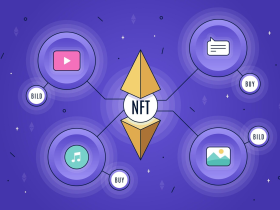Two essential parts of the Bitcoin blockchain are bitcoin miners and nodes. Although the names are frequently used synonymously, they refer to two distinct kinds of network nodes. Full nodes and miners, however, have distinct roles and important distinctions.
By verifying transactions and blocks, every Bitcoin node helps the network by maintaining the blockchain’s continuity and integrity. By taking part in the proof-of-work (PoW) process to broadcast new blocks to the network, miners go one step further in this regard. No new transactions would be uploaded to the blockchain in the absence of miners.
A Full Bitcoin Node is What?
The computers that execute the software and store the data needed to run and govern the network are called nodes in a blockchain. With the computing power appropriate for the task at hand, each node will run the software. The success of Bitcoin depends on the distinct functions that its nodes play.
Taking into account the individual components of the Bitcoin blockchain, a Bitcoin node can also be referred to as a full node. Full nodes store an updated, full copy of the blockchain and may function on a regular PC. Nodes receive transactions from Bitcoin users, verify them using the network’s rules and history, and then add them to a mempool of pending transactions that miners can work through.
To validate a transaction using Bitcoin, one must:
- Verifying the legitimacy of digital signatures
- Identifying genuineness
- Verifying correctness
- Verifying available balances and payment of transaction fees
- Avoiding the Double Dip
- Full nodes broadcast validated transactions to the network, whereupon miners gather and compile them into blocks of transactions.
Complete Bitcoin nodes are also in charge of monitoring the work done by miners and making sure that the consensus mechanism’s guidelines—such as adhering to the proof-of-work requirement, valid transaction formats, and block size limitations—are being followed.
Because they have the ability to reject invalid blocks, full nodes also lessen the chance of a 51% assault and stop miners from becoming overly powerful. However, the decentralized and competitive structure of mining itself provides the main security against a 51% attack.
Nodes, unlike miners, are not rewarded with block rewards even though they are essential components of the Bitcoin network. Typically, node operators maintain nodes for privacy protection, network security, and health, or for business purposes (e.g., exchanges or wallet services demanding precise, real-time blockchain data).
A Bitcoin Mining Node: What is it?
One kind of node, or a subset of a full node, is a Bitcoin miner or mining node. All complete nodes aren’t mining nodes, though. A full node verifies transactions and blocks while keeping an accurate and comprehensive copy of the blockchain. In addition to having these features, mining nodes take part in the mining process.
The primary role of Bitcoin miners is to validate transaction blocks, publish a new block to the network, and get paid with freshly created Bitcoin. Mining nodes can also serve as validation nodes and relay information to other nodes.
In order to accomplish proof-of-work consensus, validate, post, and receive payment, mining nodes must compete with one another to solve challenging mathematical puzzles. Significant processing power and energy are required for this process. The software used by miners to mine Bitcoin establishes the guidelines for submitting block proposals to the network.
In order to verify and propose a new block to the network, mining nodes first validate or examine transactions. The newly created block shall be disseminated to all nodes in the network and scrutinized for compliance with the regulations, which encompass the guidelines for generating fresh Bitcoin.












Leave a Reply